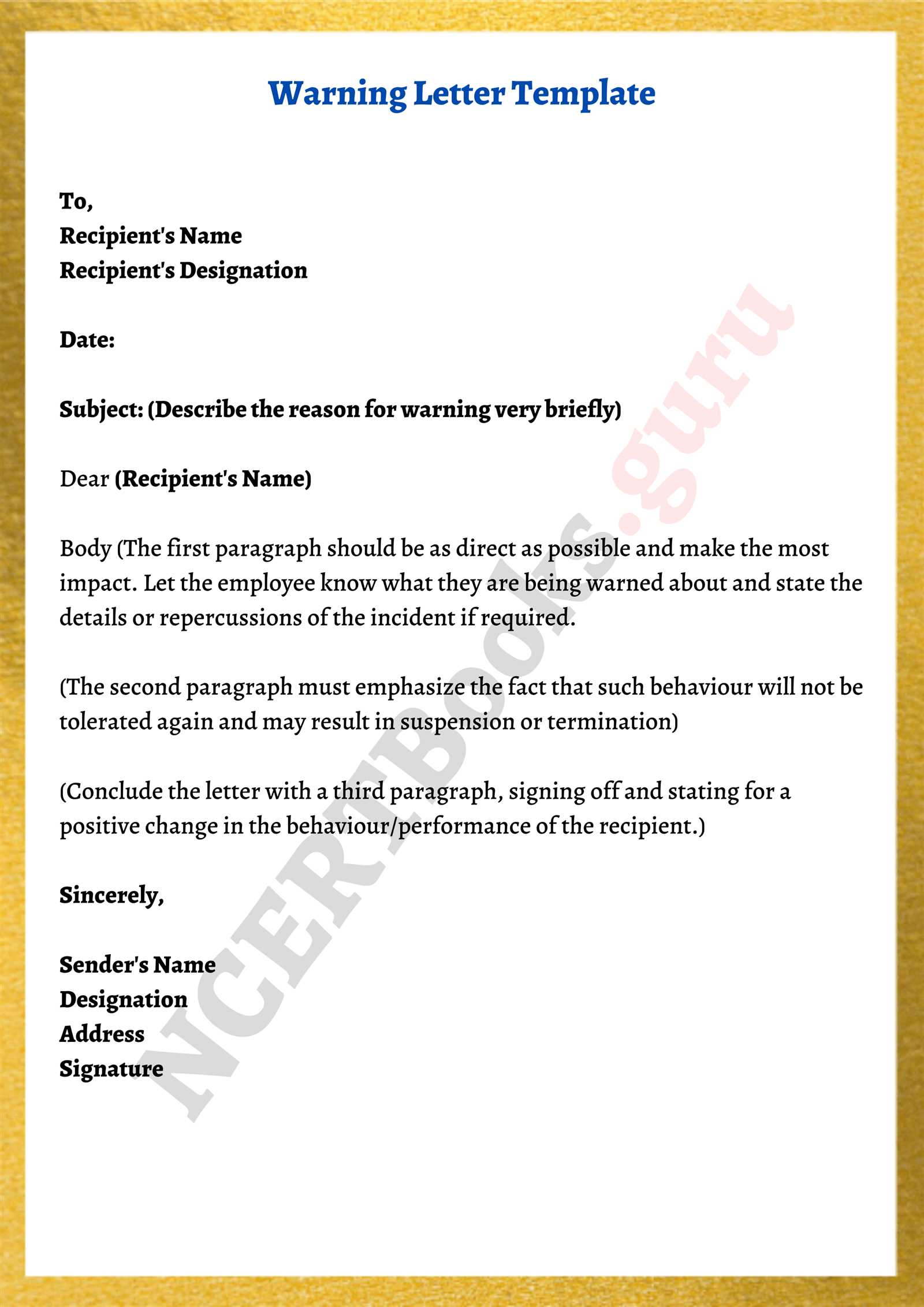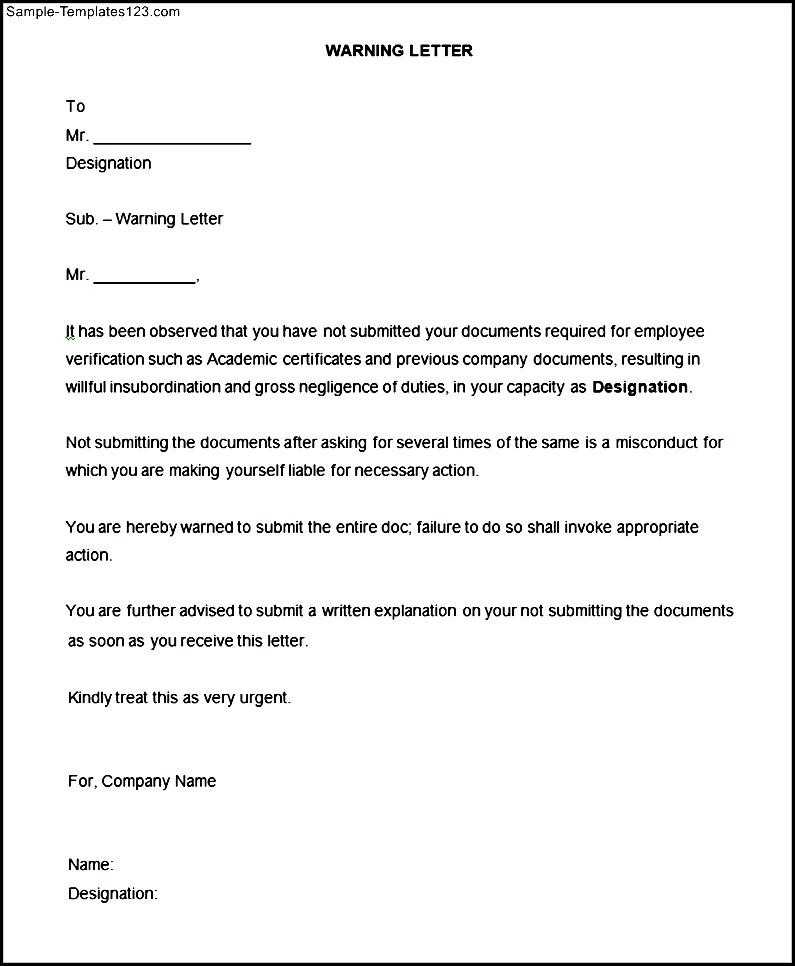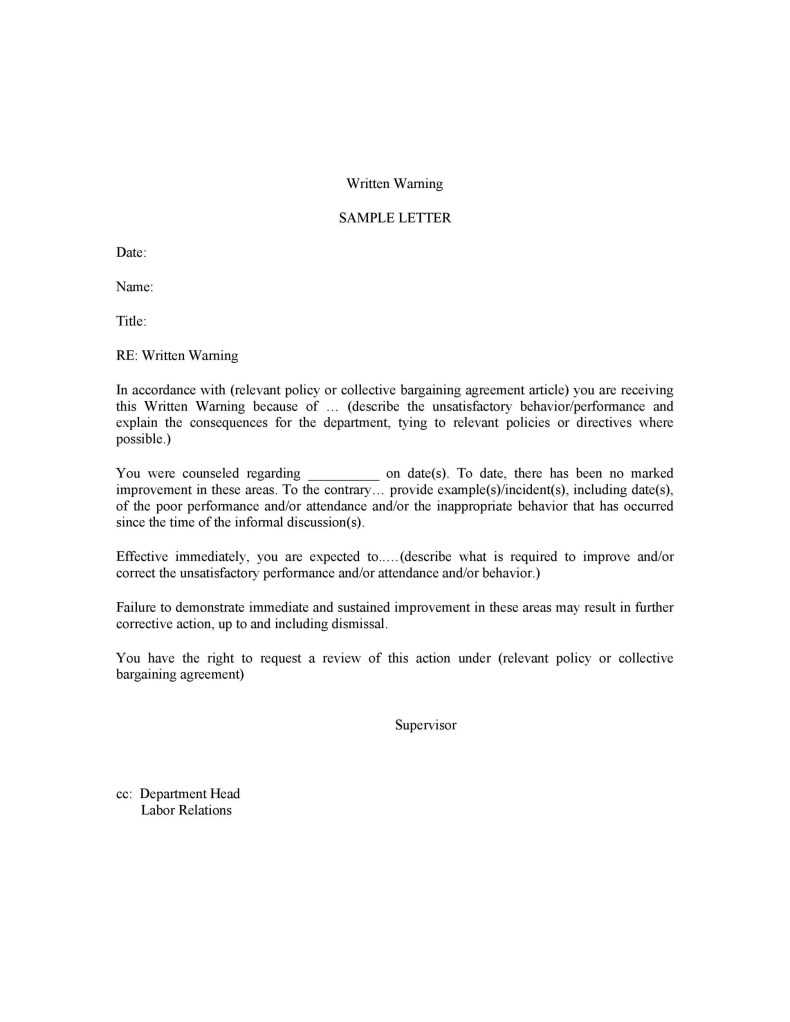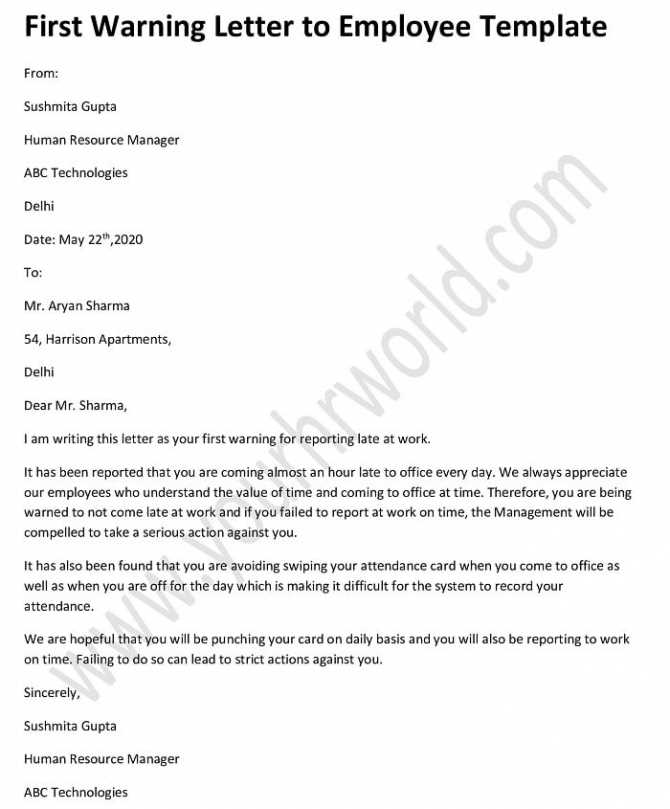Second Warning Letter Template for Workplace Issues

Addressing ongoing behavioral or performance issues in the workplace requires careful communication. It is important to outline the expectations clearly, reminding employees of their responsibilities while allowing for an opportunity to improve. The process should be handled professionally and respectfully to maintain a positive working relationship.
Important Aspects to Include

When addressing an employee’s repeated misconduct or performance problem, be sure to include the following key details:
- Clear Description of the Issue: Specify the behavior or performance issue in question.
- Previous Discussions: Reference any prior conversations or corrective actions that have taken place.
- Consequences: Explain the potential consequences if the situation does not improve.
- Expected Changes: Clearly outline the changes you expect from the employee moving forward.
Guidelines for Crafting the Message
Ensure that the tone remains professional and non-confrontational. Focus on constructive feedback and solutions. Avoid blaming or personal attacks, as this can lead to a defensive response. Instead, frame the conversation as an opportunity for the employee to correct the issue and move forward.
When Is It the Right Time?
It is important to consider timing before taking this step. Ensure that prior actions or warnings have been given and that there is a reasonable expectation of improvement. If the issue persists despite previous attempts to address it, this is the appropriate moment to escalate the matter.
Legal Considerations

Make sure your approach is compliant with company policies and labor laws. Always keep records of all written communications and discussions. If the situation continues to worsen, it may be necessary to involve HR or legal counsel to ensure that the process is handled correctly and fairly.
Understanding the Purpose of a Formal Notice
Communicating issues with employees in a formal, structured way is essential for maintaining professionalism in the workplace. A well-crafted document serves as a formal reminder and clarifies expectations while giving the employee a fair opportunity to rectify their actions or behavior. It’s an essential part of managing employee performance and behavior within an organization.
Key Elements to Include in Your Document
Ensure that the document is clear, specific, and focused on the issue at hand. Here are some critical elements to include:
- Detailed Description of the Issue: Clearly outline the employee’s actions or performance that need improvement.
- Reference to Past Discussions: Mention any previous conversations or actions taken to address the matter.
- Specific Expectations: State what changes are expected and the timeframe for improvement.
- Consequences: Highlight the next steps or possible outcomes if the situation does not improve.
Best Practices for Crafting a Clear Message

To ensure clarity and maintain professionalism, follow these best practices when drafting the document:
- Keep the Tone Professional: Avoid being overly emotional or accusatory; focus on facts and future improvement.
- Be Concise: Ensure that the message is to the point and free of unnecessary details.
- Focus on Solutions: Offer constructive suggestions and emphasize the employee’s opportunity to improve.
When to Issue a Formal Notice
Timing is crucial in these situations. This step should be taken only after prior attempts to resolve the issue have been made and when there is no significant improvement. Make sure all earlier interventions have been documented and communicated effectively to the employee.
Legal Considerations
Ensure that the approach complies with company policies and labor laws. Keep detailed records of all communications and provide the employee with the opportunity to respond. If the issue persists despite multiple attempts to address it, consult with HR or legal professionals before moving forward with further actions.
Handling Employee Responses
When employees respond to the formal notice, handle the feedback respectfully and constructively. Encourage open communication and allow them to provide their perspective. This approach fosters a cooperative environment and can help resolve issues more efficiently.
Following Up After Sending the Document
After the formal notice is sent, it is essential to follow up regularly to assess the employee’s progress. This shows that the issue is being taken seriously and provides an opportunity to offer further support if needed. Maintain open lines of communication to ensure ongoing improvement.